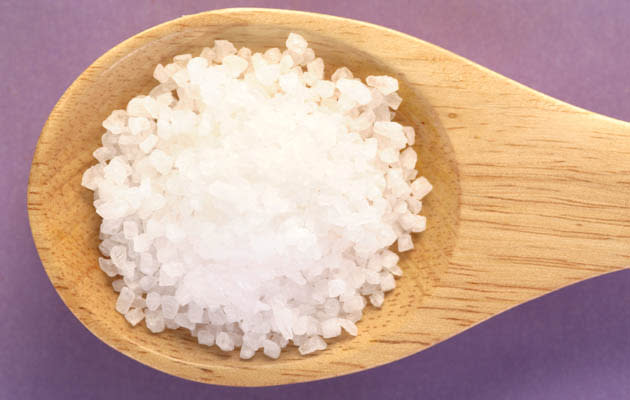The Bitter Sweet Facts About The Salt In Your Diet
Winter's nearly here and with it comes roast dinners, warming soups and cosy nights in with a takeaway in front of the fire. But be warned, all can have alarmingly high salt levels. Here, Yahoo! Lifestyle nutritionist Rachael Anne Hill offers some top tips on how much salt is really in your food and how to cut back…..
You need salt or sodium in your diet to help maintain the right balance of fluids in your body, to transmit nerve impulses and to relax and contract your muscles. The problem is, thanks to over consumption of processed and commercially prepared foods, most of us routinely eat far more than we need. Excess salt in the diet increases blood volume which in turn makes your heart work harder to move it all through your blood vessels and this, of course, puts extra pressure on your arteries as well as your kidneys, whose job it is to retain a sodium balance. Over time too much salt, especially in those who are more sensitive to its effects, can suffer increased fluid retention and blood pressure, strokes, kidney disease and heart failure. So, knowing how to effectively keep your sodium intake to a minimum is vital for your long term health.
How Much Do You Need?
Adults should eat no more than 6g of salt a day. That's around one full teaspoon. Children, of course, should eat less. Babies need less than 1g of salt a day, as their kidneys can't cope with more. Children aged 1 — 3 should eat a maximum of 2g salt (0.8g sodium), 4 — 6 year olds no more than 3g (1.2g sodium), 7 to 10 year olds 5g (2g sodium) and 11 years and older the same amount as an adult, 6g or (2.4 g sodium).
How To Cut Back ….
You don't have to add salt to food to be eating too much. That's because 75% of the salt we eat is already in everyday foods such as bread, breakfast cereals and ready meals. Some foods are naturally much higher in salt than others such as bacon, ham, salami and other cured meats, stock cubes and gravy granules, olives, pickles and sauces, cheese, salted nuts and crisps, many smoked foods, soy sauce and yeast extract, pizza and ready-made soups. These should all be kept to a minimum in order to keep salt intakes at a healthy level.
Cut back on your salt intake gradually. Your taste for salt is acquired, so you can soon learn to enjoy less. After a few weeks of cutting back on salt, you probably won't miss it, and some foods may even taste too salty. Start by using no more than 1/4 teaspoon of salt daily, at the table and in cooking, then work towards throwing away the salt shaker. As you use less salt your preference for it diminishes allowing you to enjoy the taste of the food itself.
Look at The Label
Most pre-packed foods have a nutrition label clearly visible somewhere on the packaging.
Sometimes the salt content is displayed as a percentage of your Guideline Daily Amount or as a traffic light to show whether the food is low, medium or high in salt. Where traffic lights are used red means high. Take care not to eat these foods too often.
Look at the figure for salt per 100g too. High is more than 1.5g salt per 100g (or 0.6g sodium). Low is 0.3g salt or less per 100g (or 0.1g sodium).
Eat More Fresh Foods.
Most fresh fruits and vegetables are naturally low in sodium. Also, fresh meat is lower in sodium than processed alternatives such as bacon, sausages and ham. Buy fresh, unsmoked fish and plain whole-grain rice and pasta instead of ones that have added seasonings.
Leave out the salt in many recipes including casseroles, curries, stews and other dishes that you regularly cook.
Make your own soups from scratch and add flavour with fresh or dried herbs instead of too many stock cubes.
Limit your use of sodium-laden condiments such as soy sauce, salad dressings, sauces, dips and ketchups.
Use herbs, spices and other flavourings to enhance foods. Use fresh or dried herbs, spices, zest from citrus fruit, and fruit juices to jazz up your meals. And remember that sea salt has about the same amount of sodium as table salt.
Finally, use salt substitutes wisely. Don't be tempted to use even more to achieve that same salty taste. Also, many salt substitutes contain potassium chloride. Although potassium can lessen some of the problems from excess sodium, too much potassium can be harmful if you have kidney problems or if you're taking medications for congestive heart failure or high blood pressure that cause potassium retention.



